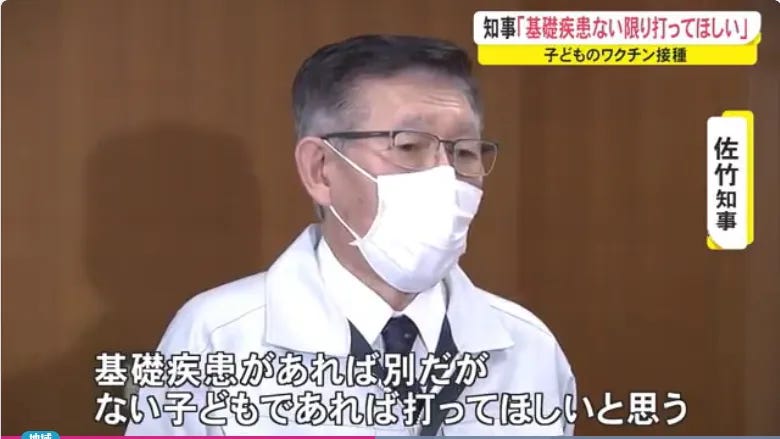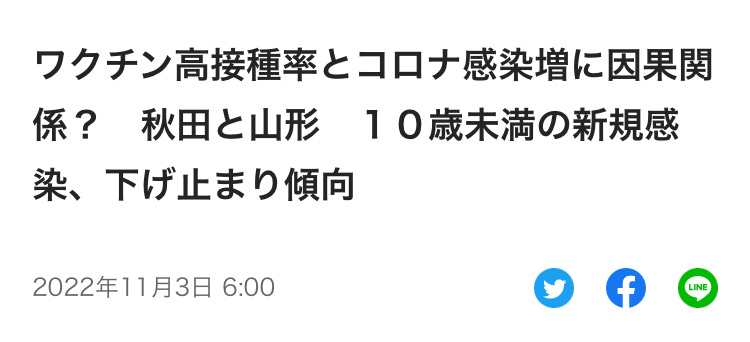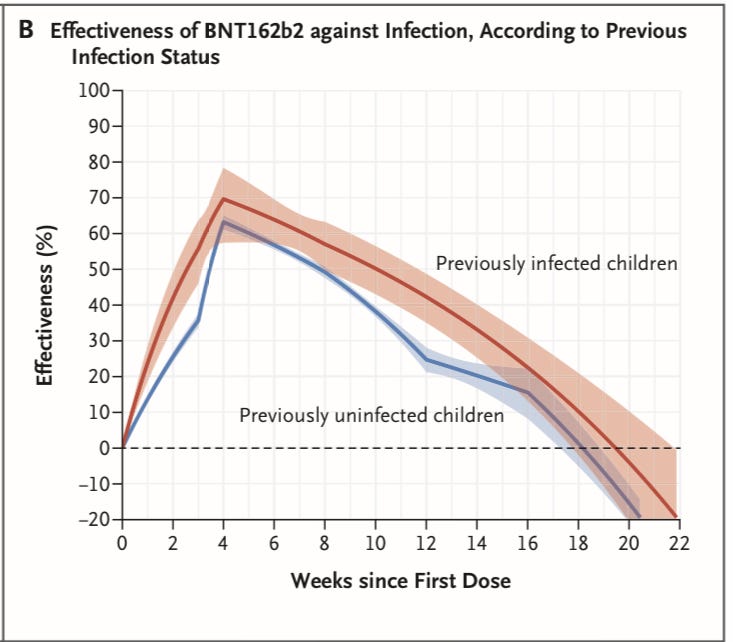Back in March, Akita governor Norihisa Satake expressed his disappointment with the national government giving the newly approved Covid shots for 5-11 year olds only a recommendation (推奨) rather an “obligation to make effort (努力義務)” like the over 12s jabs.

Since there was already one study showing negative effectiveness of the kids’ shots, I wondered whether he wanted kids to get infected.
Fast forward to November, and media in the Tohoku (northeast) region are asking something similar.

What prompted them to ask this question? The below graph shows the weekly case rates per 100,000 for kids under 10 from July to October in Akita (秋田, 5-11 double-vax rate 48.9%) and neighbouring Yamagata (山形, 46.9%) with those in Osaka (大阪, 7.8%; lowest in Japan) and nationwide (全国, 19.1%).
North American readers may be surprised that the highest vax rates are in conservative rural areas and the lowest is in heavily urban Osaka. But social conservatism in Japan equates to social conformism and deference to authority, not individual liberty.
So why are under 10s in high-vax Akita and Yamagata testing positive at much higher rates than kids in low-vax Osaka? Let’s ask the experts!
First is Osaka University immunologist Masayuki Miyasaka, one of the various Japanese experts I recently wrote about who sold their souls changed their minds about mask effectiveness in 2020.
When infections rose, worried people vaccinated their kids. So Akita’s vaccination rate went up.
Unusually for Japanese media, the article points out this makes no sense since Akita’s 5-11 vax rate exceeded 40% in mid July, whereas cases peaked in mid August. Even more unusually, the article then interviews a vax-skeptical expert, Nagoya University’s Seiji Kojima.
There’s a possibility the vaccine suppresses natural immunity. The 2-week period post-vaccination before antibodies are made is when it’s easiest to be infected. If you take multiple vaccine doses, the immune suppression effect becomes dominant, making it easier to be infected.
Of course, as Prof Miyasaka showed, expert opinion is worthless without data to back it up. But there’s plenty of data to support Prof Kojima’s opinion. For example, a study in the NEJM found negative vaccine effectiveness after 20 weeks for both 5-11 year olds with and without previous infection. In other words, the jabs seem to have erased the natural immunity in the previously infected kids.
If Japan’s government and its “experts” were concerned about the health of Japan’s children, they wouldn’t have approved the gene juice injections in the first place. But as we saw the first time Prof Kojima was featured on this blog, although they may not care about living kids, they do like to play (statistical) games with dead ones.







Guy Gin: Do you think there is enough interest in this among the Japanese people to have my book translated into Japanese? here is the link to it on Amazon: https://www.amazon.com/Heroes-Villains-COVID-19-Book-Lists-ebook/dp/B0BKGX69RL/ref=tmm_kin_swatch_0?_encoding=UTF8&qid=&sr=
and here is a video review yesterday from Ivor Cummins: https://twitter.com/i/status/1587790747251744768
thank you, sir. (You are listed in the book. I thin I already told you...)
There seems to be an increase in the number of ambulances recently. I doubt it's for the Coof. Probably something else. My bitter angry self (just against Covidians) tells me it the Fauci sauce in conjunction with the face pants. More likely the Fauci sauce. Today, I saw about 5 ambulances and heard about 5 more. These numbers have been happening for a while. I also get the same number from my anti-Covidian friends.
I never understood the creation of a vaccine for something like the flu. Nor do I understand the face diapers (I refuse to call them masks). If Japan, along with every other country in the world did absolutely nothing about the Coof, it would have ended two months after it started. The virtue signalers in the US are now asking for amnesty. They will not get it from me. And when this nonsense ends in Japan, there will be no amnesty. I expect to be compensated.